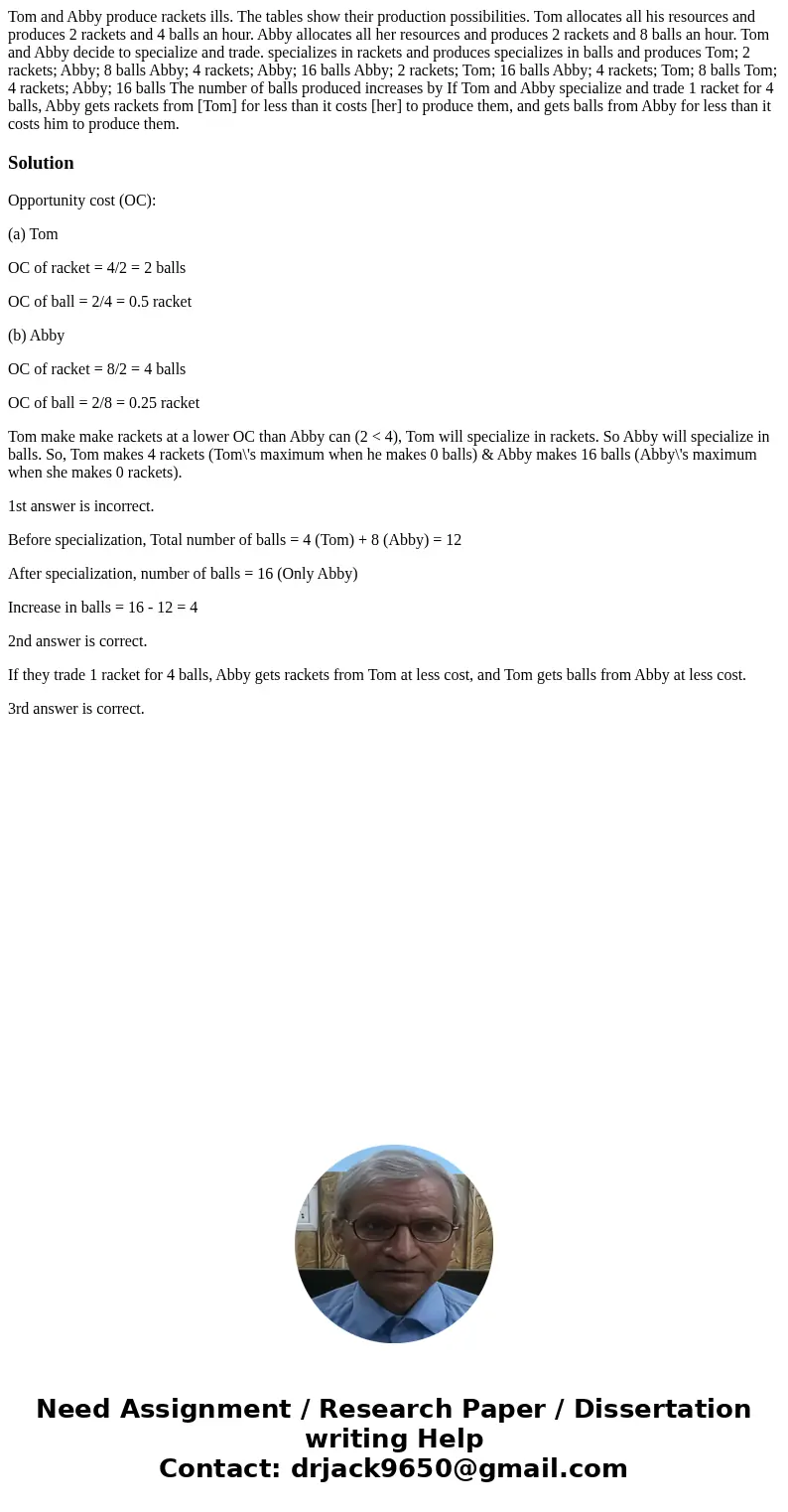Tom and Abby produce rackets ills The tables show their prod
Tom and Abby produce rackets ills. The tables show their production possibilities. Tom allocates all his resources and produces 2 rackets and 4 balls an hour. Abby allocates all her resources and produces 2 rackets and 8 balls an hour. Tom and Abby decide to specialize and trade. specializes in rackets and produces specializes in balls and produces Tom; 2 rackets; Abby; 8 balls Abby; 4 rackets; Abby; 16 balls Abby; 2 rackets; Tom; 16 balls Abby; 4 rackets; Tom; 8 balls Tom; 4 rackets; Abby; 16 balls The number of balls produced increases by If Tom and Abby specialize and trade 1 racket for 4 balls, Abby gets rackets from [Tom] for less than it costs [her] to produce them, and gets balls from Abby for less than it costs him to produce them. 
Solution
Opportunity cost (OC):
(a) Tom
OC of racket = 4/2 = 2 balls
OC of ball = 2/4 = 0.5 racket
(b) Abby
OC of racket = 8/2 = 4 balls
OC of ball = 2/8 = 0.25 racket
Tom make make rackets at a lower OC than Abby can (2 < 4), Tom will specialize in rackets. So Abby will specialize in balls. So, Tom makes 4 rackets (Tom\'s maximum when he makes 0 balls) & Abby makes 16 balls (Abby\'s maximum when she makes 0 rackets).
1st answer is incorrect.
Before specialization, Total number of balls = 4 (Tom) + 8 (Abby) = 12
After specialization, number of balls = 16 (Only Abby)
Increase in balls = 16 - 12 = 4
2nd answer is correct.
If they trade 1 racket for 4 balls, Abby gets rackets from Tom at less cost, and Tom gets balls from Abby at less cost.
3rd answer is correct.

 Homework Sourse
Homework Sourse